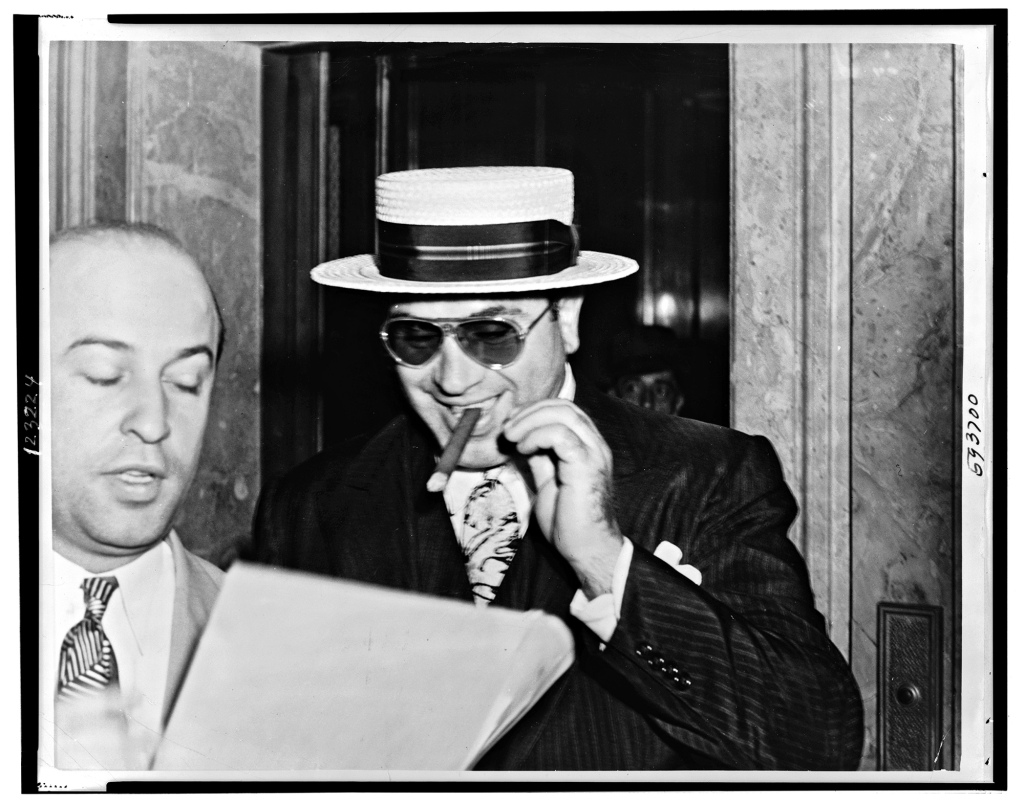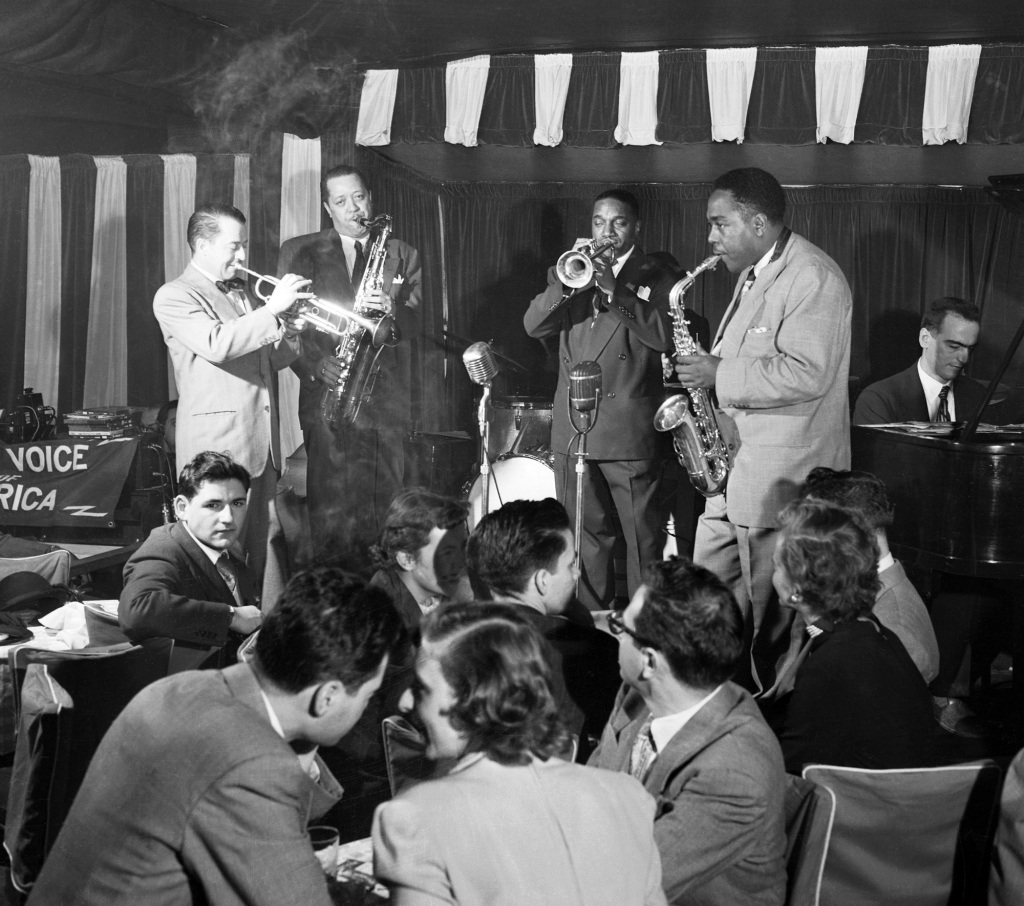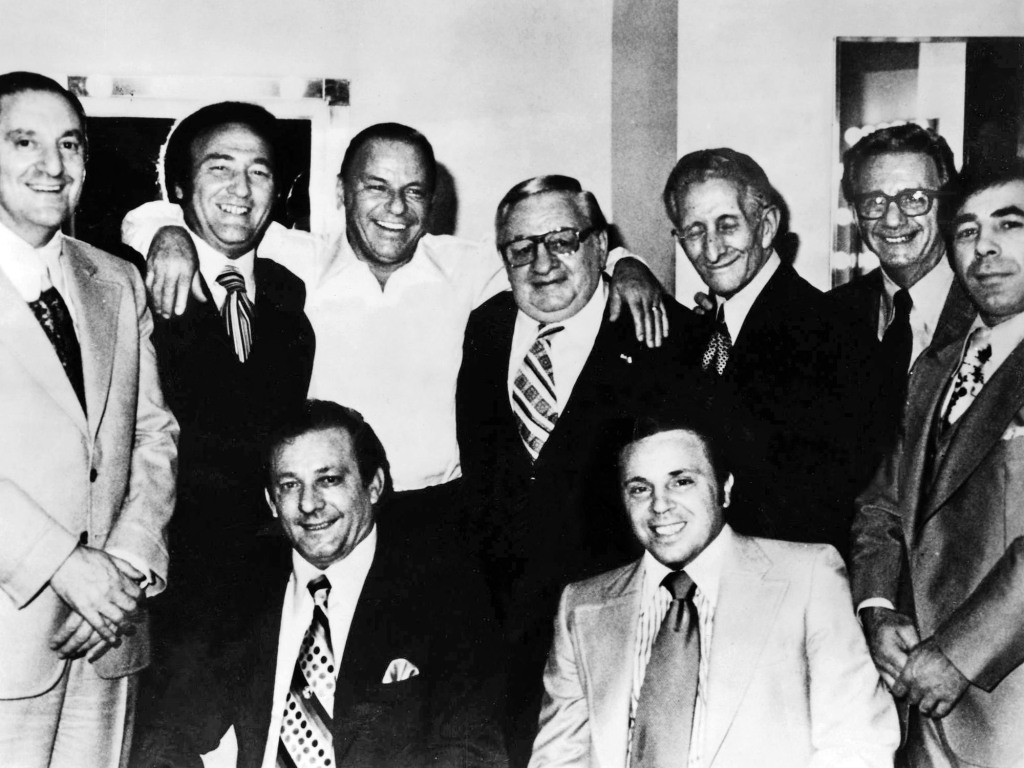Why jazz greats like Frank Sinatra flourished in mob empires
When jazz was born in the brothels of New Orleans in the early 20th century, its parents were musicians and mobsters.
Author T.J. English’s latest book, “Dangerous Rhythms: Jazz and the Underworld,” which comes out on Aug. 2, explains why jazz greats such as Louis Armstrong, Duke Ellington and Frank Sinatra flourished within mob empires headed by the likes of Al Capone, Meyer Lansky, John T. “Legs” Diamond and Charles “Lucky” Luciano.
“Jazz began at the end of a long sustained period of lynching after the Emancipation Proclamation,” English told The Post, speaking from his Manhattan home where he has lived for 32 years. “The music seems to me an attempt to create a new reality,” he added. “The music says, ‘We are alive.’ I see jazz as a response to terror and violence.”
English, who has written several books about the criminal underworld, as well as episodes for TV’s “NYPD Blue” and “Homicide: Life on the Street,” said the unlikely connection between black musicians and Italian mobsters made sense in the context of an oppressive turn-of-the-century social order.
Jazz first started bubbling in New Orleans, where Sicilian immigrants and black Americans faced the same predicament — they were shut out of wealthy white Anglo-Saxon Protestant society and harassed by corrupt white police officers.
“Black people had less to fear from a Mafiosa boss than a white police officer,” said English, a self-confessed jazz fan. “They saw the mob as their protection in the commercial marketplace. That was very true of Louis Armstrong. He knew you had to have your gangster for protection. Louis said, ‘Get yourself the biggest gangster you can.’ ”
The New Orleans recipe — where black performers aligned themselves with mobsters who oversaw one of the nation’s first legal red-light districts, Storyville, where brothels and bars thrived — spread to Kansas City, Chicago, New York, and then Las Vegas.

In 1920, Prohibition ushered in a new era for nightlife when white society started pouring into speakeasies.
“They went where the booze was,” said English. Nightclubs became socially acceptable, jazz entered mainstream entertainment even as society remained otherwise segregated, and the underworld stew became the entertainment business model.
And many mob bosses really did appreciate jazz.
“[Al] Capone was the greatest benefactor. He loved the music,” English said, adding that his henchmen once “kidnapped” New York City native Fats Waller after a 1926 performance in Chicago to surprise Capone for his birthday. Waller was greatly relieved when he realized what was going on. “[Capone] was good for the musicians: He spread the money around in the jazz world.”
Beyond just shelling out for entertainment and liquor, mobsters continued to uphold their part of the bargain to keep performers safe.
By the late 1920s, white performers had co-opted jazz and artists like Bing Crosby mainstreamed the sound, perfecting vocal pop jazz. By 1932, Crosby was one of America’s biggest singing stars and when a hoodlum tried to take advantage by extorting Crosby for protection money — that is, protection from the hoodlum beating him up — the mob stepped in.

“Crosby was raking in the dough at the time and his management, MCA, had mob connections,” said English. “MCA sent a mobster named Jack McGurn to handle it. McGurn takes the guy and kicks the s – – t out of him and Bing was never extorted again.”
Bing and Jack — also known as “Machine Gun Jack,” who reportedly took part in the St. Valentine’s Day Massacre in 1929, when seven Irish mobsters were gunned down by Capone’s rival Italian crew — became golfing buddies afterwards.
But “the biggest singer in the United States golfing with a gangster didn’t look so good,” said English. “So Bing ended the friendship. Jack was actually murdered eight months later, so maybe it was wise to end it.”
Even as jazz became an all-American music and the genre sped into differing styles, from Crosby’s crooning to wild swing and then bebop, ties to the criminal underworld and mobsters, whether Italian, Irish or Jewish, were tightly bound.

“The most popular club in New York City in the 1940s was Birdland, owned by Mo’ Levy, a gangster who sold heroin out of the club,” recalled English.
Mo’s brother Irving managed the club, glad-handing with big stars like Marlon Brando and writers such as Norman Mailer, who were regulars. One night in 1959, Irving was stabbed and killed by a pimp while the band was playing. “It was sensational,” said English. One newspaper headline read, ‘Jazz serves as background for death.’ ”
Then along came the Rat Pack and Old Blue Eyes, who ruled the modern pop jazz scene, and their HQ, mob-created Las Vegas, became the epitome of glamorous American nightlife and “The Good Life.”


“Sinatra’s relationship with the mob was very specific, very real,” said English. “The mobsters ran the casinos and the clubs and booked the music they liked.”
Which, by the 1960s, didn’t jibe with young people screaming for the British Invasion or the antiestablishment hard rock of hippie culture.
“Young people thought Vegas was hokey. The music was music their parents liked,” said English. Jazz, once the music of rebellion, started to sound old-fashioned in comparison to the youth culture’s pop, rock and soul, and the mob’s hold on the entertainment business began to show cracks. By the 1980s, the old gangster world had crumbled and jazz lost its financial backing.
By then, however, jazz was recognized for its artistic merits and cultural institutions like Jazz at Lincoln Center stepped in.
“[At the beginning] there was no patronage from the institutions of culture and wealth,” said English. “Jazz wasn’t going to happen at that level. It had to earn its place at the table.”
That would never have happened without the mob, and the performers who for decades kept quiet about what they saw.
“They kept their mouths shut,” English said of the musicians. “They played, got paid, and didn’t talk out of school.”
English said that’s ultimately because the mobsters and the jazz greats were united in the same goals, which is all that mattered to them.
“It was really the same pursuit of the American Dream,” English said. “Just from the gutter.”
Read the full article Here


